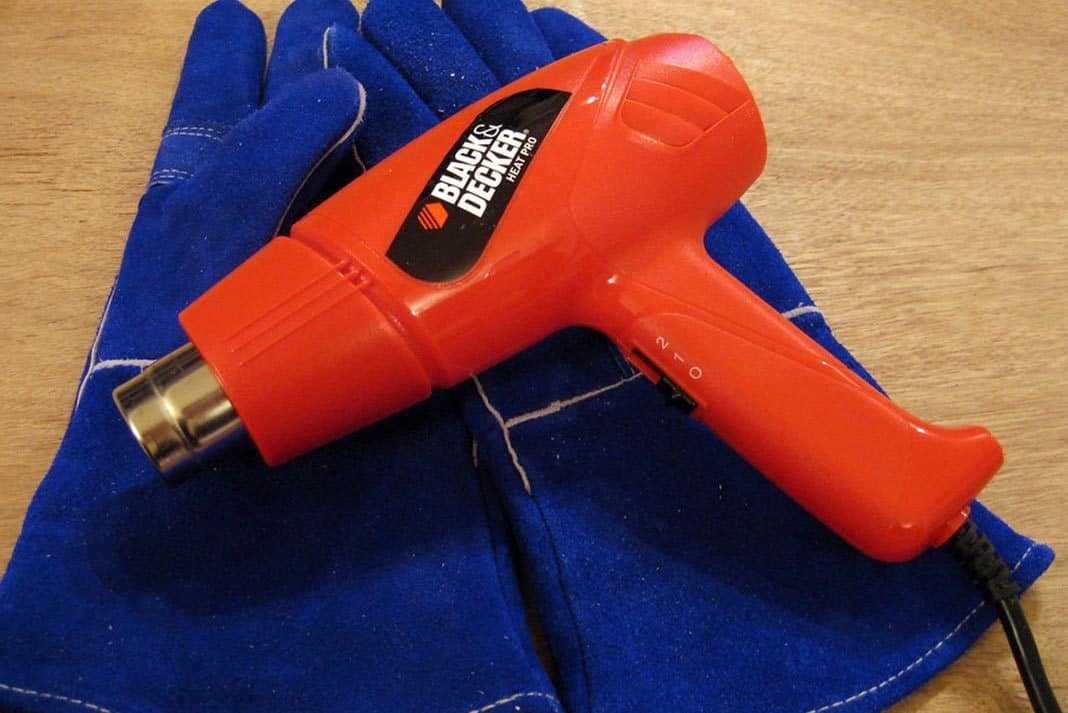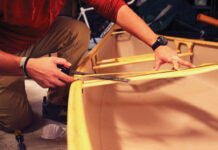Repairing a cracked kayak is what nightmares are made of, but there is no reason you can’t fix your trusted plastic boat and turn that nightmare into more pleasant memories.
Kayak repair guru Jamie Dors of Paddle Sports Repairs walks us through this straightforward, but sometimes sticky, fix. Sorry, but you’ll need to find a new excuse to buy a new boat.
Icy temperatures and craggy runs make spring paddling a recipe for cracked boats, but this is possible all-year round from collisions with rocky shorelines, pins or other random events. However it happened, these are the kayak repair tips you need to know to get back on the water.
Repairing a plastic kayak
Not all polyethylene is created equal. Most manufacturers use layered high-density polyethylene (HDPE). Alternatively, a few boats out there, including Jackson Kayak’s Elite lineup, are made of a variation called high-density crosslinked polyethylene (HDXLPE).
Both types of poly are weldable, but HDXLPE is a lot trickier. “Its melting point is very close to its burning point,” Dors warns. This makes not scorching HDXLPE more difficult for most people without professional experience and highly specialized equipment. If you’re not sure what type of plastic you’re working with, contact the manufacturer.
Kayak repair kit
You can weld plastic with either a heat gun or plastic welding iron. Learning how to fix a cracked kayak can take time. “The key is providing direct and constant heat,” Dors says. Hot air can pool material so it’s important to use a high-quality heat gun with the proper focusing tip nozzle.
A plastic welding iron may work better since it provides a more focused, consistent heat. If your boat’s manufacturer doesn’t sell poly welding sticks, they can be found at some auto or motorcycle body shops or online.
For a professional look, try matching colours, or go with whatever you can get your hands on—chicks dig scars. If you’re working on a particularly large crack, you’ll want reinforcement that will help the repair to hold. Use mesh for cracks in flatter surfaces like the hull or decks, and rods to support cracks in awkward areas such as around cockpit combing.
Stainless steel or aluminum works best because they won’t rust. Aluminum is lighter. Lastly, get your hands on a good scraper, some sandpaper, a file and a surform for prepping and finishing.
Prep the kayak
Your boat has to be clean before you begin work. Hose it down and then sand or scrape the surface around the repair area. Opening up the crack a little with a scraper will help with the binding process. Finally, clean the area inside and out with mineral spirits as dirt and grease can interfere with welding.
Repair the cracked kayak
Whether you’re working on a deep gouge or a crack, the process of heating and mixing is more or less the same. Dors says holes are rare, “but if you’re this unlucky, you’ll have to find a scrap piece of poly, cut it to size and follow the same process as welding a crack.”
Begin by preheating the material
If your hull didn’t crack on its first run down the river, then its surface is probably fuzzy and whitened. “You’ll know the surface is hot enough when it starts to get shiny and the fuzziness disappears,” Dors says. If you’re using a heat gun, you’ll also need to preheat the welding rod. When welding with a heat gun, lead with the gun and follow with the heated rod. Keep the gun 1 to 2 inches away from the work surface.
Mix the welding rod with the boat material using a stirring motion so as not to let the melted plastic pool. A steady, methodical hand will do the trick if you’re using a welding iron. Just take your time, ensuring the material mixes well, and leave the rest up to the iron.
If you’re using reinforcement, support the hull and realign the crack, then press the mesh or rod into the plastic as you heat. Allow the plastic to mix around the reinforcement for strength. “If it doesn’t mix well, the weld will pop open when it cools or is under stress,” Dors cautions.
Take your time repairing the kayak
This will ensure the heat penetrates the material completely. “Don’t rush,” suggests Dors, “plastic does not conduct heat well.” Continue the weld at least a half-inch beyond the length of the damage. This will prevent cracks from continuing to form after welding.
“The weld should be just as thick or thicker than the original surface of the boat,” says Dors. Reheating the area until it’s pliable and gently pressing it back into shape with a flat, metal object can smooth out lumps.
Recovery
Continue to support the weld while it cools to restore the boat’s original shape. Let the plastic cool naturally. Adding water or anything else to cool it will weaken the weld. Once the weld cools, use a scraper, file or surform to smooth out the surface.
Bruised egos will pass, scarring should be minimal and your boat will live to see another day on the river. Next up—perfecting your river-reading skills to avoid the carnage in the first place.










Thermoform kayaks can be repaired with two part plastic welder / epoxy available at most hardware stores. Add some Fiberglass cloth for strength.
Does it help to drill a very small hole at each end of the crack run to keep the crack from spreading? You can then extend your repair/fill weld to fill that small hole. I know this works on some material that has a tendency to extend the crack as pressure is applied at some point. Just wondering as I’ve not welded plastic before…
If you’re dealing with a single crack – go ahead and drill and then heat. But if you have a spider crack that goes in several directions, I wouldn’t.
I have an older poly rec boat that I loan to visitors and have gone the heat gun route for some minor damages, followed by a coat of Sho-Goo forced into the damaged area and topped with a patch of fiberglass tape which gets skinned over when all is dry using 100% silicone . Or simply a patch with Flex Seal 5 inch tape. Yep it sure is an ugly patch but it will outlast the rest of the boat.
kozmo18
Do u know anyone who repairs ocean kayaks in Newport Beach, ca area?